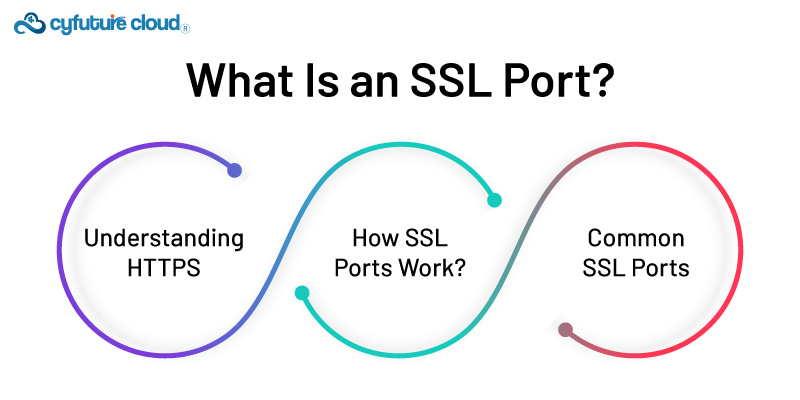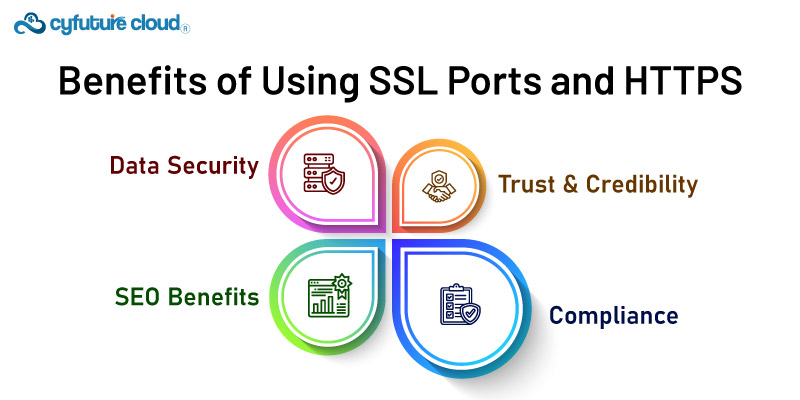 Server
Colocation
Server
Colocation
 CDN
Network
CDN
Network
 Linux Cloud
Hosting
Linux Cloud
Hosting
 VMware Public
Cloud
VMware Public
Cloud
 Multi-Cloud
Hosting
Multi-Cloud
Hosting
 Cloud
Server Hosting
Cloud
Server Hosting
 Kubernetes
Kubernetes
 API Gateway
API Gateway

 Understanding SSL ports and HTTPS is vital to any web owner in today's digital age. And with internet security playing a significant role in web admin's online lives, they must know where to start. Safe Sockets Layer is a family of network protocols based on a 512k RSA public key that offers communication security over TCP/IP-based network protocols.
Understanding SSL ports and HTTPS is vital to any web owner in today's digital age. And with internet security playing a significant role in web admin's online lives, they must know where to start. Safe Sockets Layer is a family of network protocols based on a 512k RSA public key that offers communication security over TCP/IP-based network protocols.
SSL ports are designated channels that are used for secure data transmission. SSL ports use encryption algorithms like RSA to protect the data transmitted between a user's web browser and a website's server against interception and hacking. These designated communication channels allow a website to do a secure data transfer over HTTP (Hypertext Transfer Protocol), although other protocols can also use SSL.
When done, the URL prefix changes from "http" to "https". The default port for secure HTTP layer communication is port 443. The conversion process from HTTP to HTTPS is known as HTTP over SSL. The latest version of SSL is SSL3.
Are you ready to dive in deep and study the intricacies of SSL ports and HTTPS? This guide is for you.

SSL (Secure Sockets Layer) ports are like secret tunnels on the internet that encrypt your information and make it unbreakable. They are like roads used by your web browser to send information to the website's server so that your essential information, like credit card details and passwords, are kept safely.
It is like a secret code that you and the website can understand, but the hackers cannot, so they can’t access your personal information.
Thus, you can be calm whenever you see that little padlock icon on your browser's address bar, knowing that SSL ports are working hard to secure your data.
Hypertext Transfer Protocol Secure acts as a safeguard for your internet browsing. HTTPS encodes your data in a secret code. When you notice "https:// at the beginning of a website's address, it means your connection is encrypted and safe. It is like having a virtual bodyguard for your online adventures.
SSL ports function by creating a secure connection between the client and the server. This process begins with an SSL handshake. In addition, the encryption and decryption of data transmitted between a client and a server is only done after a secure connection is established.
|
SSL Port |
Protocol |
Description |
|
443 |
HTTPS |
The default port for secure HTTP traffic is widely used for secure internet communication. |
|
465 |
SMTP |
Used for secure SMTP (Simple Mail Transfer Protocol) communication, typically for sending emails securely. |
|
993 |
IMAPS |
It is used for secure IMAP (Internet Message Access Protocol) transmission. |
|
995 |
POP3S |
It is used for secure POP3 (Post Office Protocol version 3) communication. |

Data Security: Port SSL and HTTPS encrypt data transmission, preventing it from being intercepted and unauthorized access.
Trust and Credibility: Websites with HTTPS protocol build trust with users by showing their commitment to security and safeguarding confidential information.
Compliance: Many regulatory standards and industry best practices require using port SSL/TLS encryption for data protection.
|
Step |
Description |
|
1. SSL Certificate |
Demand for SSL certificates from a trusted Certificate Authority (CA) to encrypt data. |
|
2. Configure SSL/TLS |
Configure your web server to use SSL/TLS encryption and specify the SSL ports for secure communication. |
|
3. Update Links and References |
Update all internal links, references, and resources to use HTTPS to ensure users a seamless and secure browsing experience. |
|
4. Monitor and Maintain Security |
Regularly monitor SSL/TLS configurations, renew SSL certificates, and stay informed about security best practices to maintain a secure environment. |
In conclusion, SSL traffic port and HTTPS play a pivotal role in ensuring the security of online communications. By mastering the fundamentals of SSL ports and embracing HTTPS, website owners can effectively protect their online platforms. Simultaneously, internet users can browse with confidence, knowing their data is secure. Familiarity with SSL ports and HTTPS is essential in the ongoing battle against cyber threats.

Let’s talk about the future, and make it happen!
By continuing to use and navigate this website, you are agreeing to the use of cookies.
Find out more


